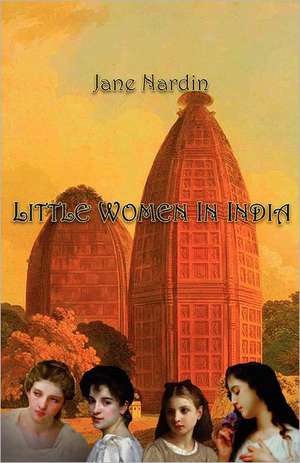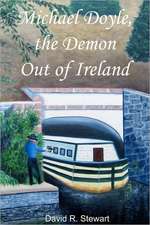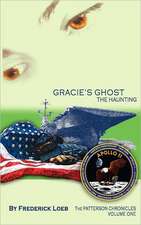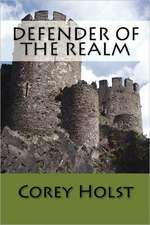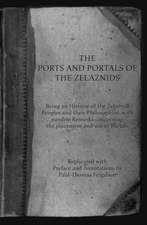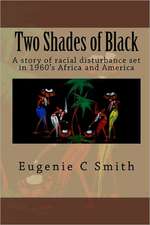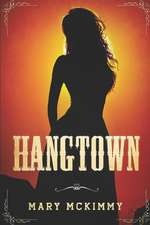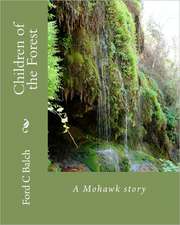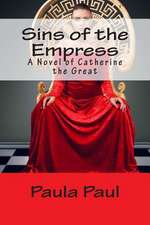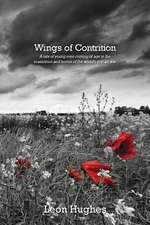Little Women in India: His Story So Far
en Limba Engleză Paperback – 5 sep 2012
Preț: 80.04 lei
Nou
Puncte Express: 120
Preț estimativ în valută:
15.32€ • 15.82$ • 12.75£
15.32€ • 15.82$ • 12.75£
Carte disponibilă
Livrare economică 05-19 martie
Preluare comenzi: 021 569.72.76
Specificații
ISBN-13: 9781908462077
ISBN-10: 1908462078
Pagini: 256
Dimensiuni: 140 x 216 x 15 mm
Greutate: 0.33 kg
Editura: New Dawn Publishers Ltd
ISBN-10: 1908462078
Pagini: 256
Dimensiuni: 140 x 216 x 15 mm
Greutate: 0.33 kg
Editura: New Dawn Publishers Ltd
Notă biografică
Since obtaining her doctorate in English Literature from the University of Buffalo, Jane Nardin has taught English Literature at Universities in North America, Europe and Asia. Louisa May Alcott, Jane Austen, Maud Hart Lovelace and Sydney Taylor rank among her favourite authors, and after reading Jeanne Birdsall's 'Penderwicks' books, updating Louisa May Alcott's Little Women, she decided to write her own story, her debut novel LITTLE WOMEN IN INDIA, about a family of four likeable sisters, caught up in the great Indian Mutiny of 1857. Jane has two daughters and three granddaughters- her own Little Women- all of whom love to read. She currently lives in Singapore with her husband.
Recenzii
This narrative of four sisters begins with the lightness and delicacy of lacework, feminine and domestic. But, when the girls find themselves caught up in the violence of the Indian Mutiny, difficult choices must be made, hard lessons have to be learned - and the lace turns to steel, cold, hard and uncompromisingly told. - Victor Watson, Author of the PARADISE BARN series & numerous other novels Nowadays, Abe Lincoln fights vampires and Mr. Darcy is the least of Elizabeth Bennet's problems, what with zombies and all. Could LITTLE WOMEN IN INDIA compete with that? Absolutely! It's fun, insightful and crammed with illuminating information. These sisters live a frugal life, with romance and a growing social consciousness, in colonial India-19th century Little Women with 21st century values. - Dee LaDuke and Mark Alton Brown, authors of WRITING AND PRODUCING TELEVISION and MAKING GREAT TELEVISION, and screenwriters of numerous US television shows including GIRLFRIENDS and DESIGNING WOMEN. In Jane Nardin's debut novel, we have a lively and witty updating and reimagining of Alcott's classic, interspersing the standard Victorian female preoccupations of housekeeping and husband-hunting with less usual activities such as escaping mutineers and learning how to make charcoal. Nardin's Little Women are more than Alcott's pilgrims in progress; they are recognizably modern both in their mindsets and values (and, in one instance, literary imagination). Readers will find this an interesting, well-paced novel with likeable and energetic characters. - Susan Ang, author of THE MASTER OF THE RINGS: INSIDE THE WORLD OF J.R.R. TOLKIEN and THE WIDENING WORLD OF CHILDREN'S LITERATURE Young, even not so young, adults will enjoy this book immensely. The author dramatizes her unique concept in a narrative that places Alcott's Little Women in a setting that's both exotic and dire--the bloody 1857 Indian peasant mutiny against British rule. Readers will immediately engage with the realistic and humorous sibling interplay and then be swept up by the action. The "little women" will learn that they can act as bravely and ably as men (even when forced to shed blood) and will find their social values and moral sentiments changing. Contemporary readers will be absorbed by this vivid portrait of India under colonial rule and discover the novel's themes still relevant to their lives. Above all, they will delight in the adventures and romances of these beloved characters given new life by a gifted author. - * * * * *, Judy, Undisclosed Girls will love this look at India in the 19th century. Gives a picture of British attitudes toward their colonial subjects as well as their and India's attitudes about women. A fairy tale ending to make girls happy, but enough of real history to provoke thought and compassion. - * * * * *, Mary Starr, Undisclosed What a little gem this turned out to be. I thought my daughter might like this so I picked it up... and couldn't resist diving in myself. My frame of reference for the time period is my literary hero, Patrick O'Brian. His books set in Asia are what drew me to this in the first place. But this is a very different book than anything found in O'Brian, and in that it has some interesting things to offer. Texture, for instance. For all the mastery in O'Brian his treatment of some kinds of things is always only ever superficial. Nardin conveys superbly the social complexities among different layers of 19th century colonial India. It was also nice to get some texture filled in on such otherwise mundane things as the washing of clothes, cooking, writing materials, etc. Plus I liked the character development: whereas the book started out slowly, it builds, and the protagonists go through some serious changes through their experiences that are convincingly portrayed... I'll just have to hope for a sequel, so I can get that for my daughter too. - * * * * *, Matt, Undisclosed 4 customer reviews, avg 5 out of 5 stars (perfect rating)- Amazon.com The Mays are a typical English family, circa the 1850s. Four wilful teen daughters. Parents trying to hold their girls to the highest standard of propreity. It's tough living in English-colonized India, with a nursemaid and washerman. Instead of treacle tart, you're eating gulab jamun. But Papa is in debt, and the girls must make prudent marriages. If this sounds like Pride and Prejudice, author (and former UW-Milwaukee English prof) Jane Nardin modeled her LITTLE WOMEN IN INDIA after a certain fictional family. (She channels Louisa May Alcott, too.) The May girls may wear petticoats, but calamitous events make them more worldly than Austen characters. A fun, fast-paced read for fans of 19th-century female writers. - Ann Christenson, Milwaukee Magazine Insider Review Imagine being an English girl in India in the middle of the nineteenth century. There is rebellion everywhere, and even though you are somewhat sympathetic with the Indians, you are also terrified. This is the scenario of Jane Nardin's version of Little Women. Exciting and exotic, this very different version features four girls, who all resemble Alcott's heroines, but they're cleverly re-imagined for today's readers. They're more liberated - they hate being called 'Little Women' by their father - and they're much less sympathetic with each other, although they all love each other dearly. For example, Elizabeth (Amy) thinks that Fanny (Beth) is soppy and too good to be true. The girls are all likeable and share many of the characteristics of their classic counterparts, but they're also much more intrepid. Evocative and somewhat political, this novel contrasts the British way of life in India with the treatment of the Indians. It is an indictment of the lack of understanding of Indian religion and culture by the British, and it also tells the sad story of a mixed-race woman deserted by her husband. The girls in the novel certainly learn a lot about this, while coping with several dangers and emotions. I did find this to be more like an adventure story than a version of Little Women, so I was a bit disappointed, although I enjoyed Little Women in India immensely. - Lisa Sanderson, Australia (http://www.bookaddiction.blogspot.co.uk/2012/12/little-women-in-india-by-jane-nardin.html) "Books are made out of other books" is the motto, the welcoming message of Jane Nardin's debut novel, which may also function as the author's justification for writing a British counterpart of Louisa May Alcott's Little Women (a novel I haven't had the chance to read yet). As Alcott's novel, Jane Nardin's Little Women in India follows the story of the May sisters' coming of age and their endeavour to discover themselves in a world dominated by turmoil, violence and masculinity; a world which is not prepared yet for four independent little women. The author set the action in the 1856 British India, thus combining her passion for the Victorian life and literature with her keen interest in Indian culture. Being set in a subjugated land, it deals not only with feminism, social hierarchies and etiquette but also with themes like history (Nardin presents real events - The Indian Mutiny - trying not to take sides) and the clash of cultures, with the inevitable tensed relationship between the conqueror and the conquered... She presents a society in which the fishing fleet (ships that brought girls from England to 'fish' for husbands) was a reality. A society in which the sole attribute of being a woman was that of being a good wife and thus that of choosing the best match. Hence, it was not uncommon for a woman to seek for a three-hundred-pounder, a slang term for any Company official (the British East India Company, of course) whose wife would receive a 300 pound pension if he died... among all the bloody events and the patriarchal society, we can take a glimpse at a beautiful India, with all its interesting deities and colourful art. - Simona Lozovschi, Romania (http://dealulcudor.blogspot.co.uk/2012/12/little-women-little-women-where-are-thee.html) Imagine what the classic book Little Women by Louisa May Alcott would be like, if instead of being set in America, was set in India during Victorian times and British occupation? Also what if the sisters' ages were switched around a little bit? Throw in an uprising of the impoverished people of India, and you have Nardin's novel. It was extremely interesting to me to read this, and compare it to the original novel. Being British and having grown up in India DID alter the personalities of the once-familiar May (a.k.a March) girls quite a bit. Catherine (Jo) is the oldest, then comes Jane (Meg), Elizabeth (Amy) and Fanny (Beth). Once I had figured out who was who, I spent the majority of the novel watching them grow and change, into less selfish and more socially conscious individuals. They all began to think of more than husband hunting when the rebellion broke out and they were forced to flee to a poverty stricken village to hide from the rebels (who were skewering any English, including women and children). I went into this book not knowing much about the politics of India in the late 1800s and I was given quite the education, in a very enjoyable way. It did seem to take about a third of the book before the action picked up, but once it did it was constant and thrilling... All in all an enjoyable book and I would recommend to both fans and detractors of the original work! :) - Anna Partrick, MI, United States, Diamonds&Coal Book Reviews (http://diamondinroughcoal.blogspot.co.uk/2012/12/little-women-india-style.html) Little Women in India has been marketed as similar to the remakes of Pride & Prejudice and other classics. This story, however, is not about the same four sisters Louisa May Alcott wrote about. These four sisters- Catherine, Jane, Elizabeth, and Fanny May- live in India, and except for several years of school in England for Catherine- they have lived there all their lives. They live in British controlled India. Soon a mutiny arises and the sisters have to flee for their lives to a small village. They go into hiding to save their own lives. There they live with Indians and learn how the Indians live- they work like peasants, learn how the Company (aka the English) control every aspect of their lives including their very survival. The turning point comes when the Company finds the sisters in the village and it is kill or be killed. I think Nardin did her homework on British India. She mentions Oudh, for example. At the beginning of the novel, there is a lot of racism, even when they are trying not to be racist. They do have Indian friends, but they are all servants. Toward the end, the racism amongst the May family has all but disappeared. It raises moral questions yet doesn't just spell out the answers for the reader, which is refreshing... I was pleased to discover that the ending was not all wrapped up neatly in a bow. There were loose ends and that is how it should have ended. I liked the Hindi words that were thrown in randomly, as well. It made it sound more authentic. I give the book three and a half stars- I enjoyed reading it and I thought it was very imaginative and well-researched. It is worth reading. - Rebecca T, Undisclosed (http://imlostinbooks.blogspot.com/2012/12/little-women-in-india-by-jane-nartin.html) In this invented replay of Louisa May Alcott's classic young adult novel, four teenaged sisters - literary Catherine, artistic Elizabeth, pretty Jane and pious Fanny - lead gentile lives in a British expatriate compound in northern India. They go to social events, pine for young men of similar rank and class, and work at domesticity. Their quiet lives are suddenly shattered by the Sepoy Mutiny, a violent rebellion that erupts in 1857. While their parents are away, an especially bloody conflict between native Indian and East India Company soldiers erupts and the May sisters must hurriedly escape into the rural countryside. After several months in hiding, the girls rejoin family and friends, matured by their adventures and stronger and more independent than when they fled. Traces of colonialism, history, culture, romance and suspense fill each of the short chapters. Literature professor and first-time author Nardin channels Alcott and Jane Austen in this easy-to-read piece of light historical fiction. - Linda Frederiksen, OR, United States (http://www.portlandbookreview.com/little-women-in-india/)
